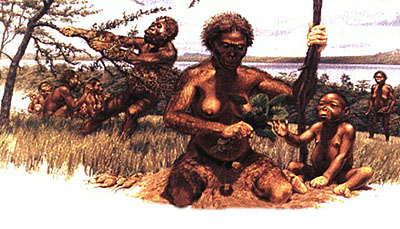
The Physical Characteristics of Humans
- Page19 -

In mammals, the female invests much more energy than the male in the bearing and rearing of offspring. The same disproportionate investment is visible in humans: women carry gestating infants for nine months and begin lactating soon after birth. Usually women are the primary care givers to children, especially infants. In almost all human cultures, however, males, and often an extended kinship group, also assist with child rearing. Human offspring are slow-maturing (see section on "retardation of maturation") and have few "programmed" genetic behaviors. As a consequence, human offspring not only can be taught; they must be taught.
In addition, child-bearing involves special difficulties and adjustments in humans because of the size of the infant's head – a by-product our large brain. Perhaps the most practical difference between the lives of men and women is the danger and trauma associated with childbirth. Consequently, child rearing in our species is uniquely difficult and requires almost infinite investments of time and attention.
Cultures exhibit a remarkable variety in child-rearing arrangements. As a general rule, however, cultures that invest in child rearing flourish and those that do not, do not.
In very recent times, in the twentieth century, the development and elaboration of cultural techniques (such as milk substitutes, refrigeration, etc.) have made human anatomy a poor predictor of actual behavior or social roles. In earlier times, biology was the primary determiner of one's social or gender role, and the biology of reproduction was a very powerful influence.